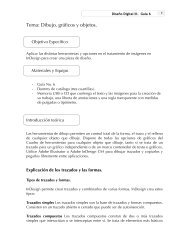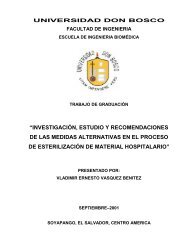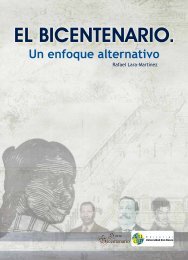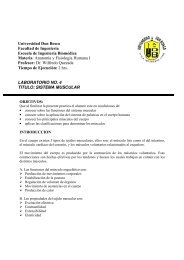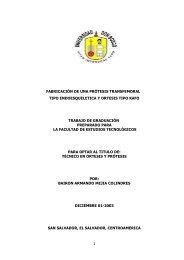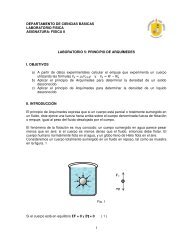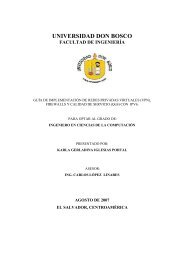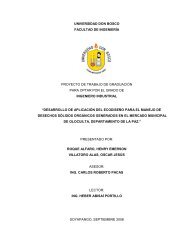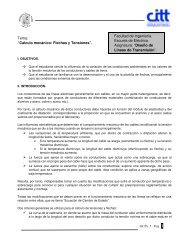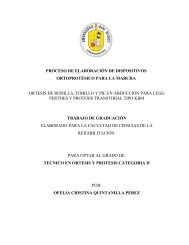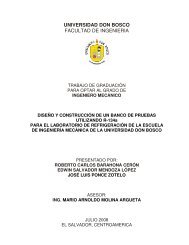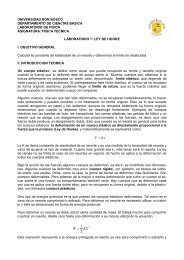cuentos de barro - DSpace Universidad Don Bosco
cuentos de barro - DSpace Universidad Don Bosco
cuentos de barro - DSpace Universidad Don Bosco
You also want an ePaper? Increase the reach of your titles
YUMPU automatically turns print PDFs into web optimized ePapers that Google loves.
Santa Rosa, ponían un fostró. Tres días<br />
estuvieron andando en lodo, atascados<br />
hasta la rodilla. El chico lloraba, el tata<br />
mal<strong>de</strong>cía y se reiba sus ratos.<br />
El cura <strong>de</strong> Santa Rosa había aconsejado<br />
a Goyo no dormir en las galeras, porque<br />
las pandillas <strong>de</strong> ladrones rondaban<br />
siempre en busca <strong>de</strong> pasantes. Por<br />
eso, al crepúsculo, Goyo y su hijo se<br />
internaban en la montaña; limpiaban un<br />
puestecito al pie diún palo y pasaban allí<br />
la noche, oyendo cantar los chiquirines,<br />
oyendo zumbar los zancudos culuazul,<br />
enormes como arañas, y sin atreverse a<br />
resollar, temblando <strong>de</strong> frío y <strong>de</strong> miedo.<br />
—¡Tata: brán tamagases?...<br />
—Nóijo, yo ixaminé el tronco cuando<br />
anochecía y no tiene cuevas.<br />
—Si juma, jume bajo el sombrero, tata.<br />
Si miran la brasa, nos hallan.<br />
33<br />
it were the tracks of whip. They put on a<br />
record on the phonograph and listened<br />
to a fox trot while they ate, chewing<br />
tortillas and cheese from Santa Rosa.<br />
They had walked for three days through<br />
mud up to their knees. The young boy<br />
cried. The father cursed sometimes and<br />
laughed at other times.<br />
The priest of Santa Rosa had warned<br />
Goyo not to sleep in abandoned huts,<br />
because gangs of thieves were always<br />
around hunting for travelers. So, at<br />
nightfall Goyo and his son escaped<br />
<strong>de</strong>ep into the woods. They cleared a<br />
little spot at the foot of a tree and spent<br />
the night there trembling from cold<br />
and fear, not daring to say a word. They<br />
listened to the chiquirines 69 sing and<br />
to the buzz of the blue-tailed, big-asspi<strong>de</strong>rs<br />
mosquitoes.<br />
“Pop, will there be tamagases 70 ?”<br />
“No, son. I examined the tree trunk<br />
before dusk and it ain’t got no holes.”<br />
“If you smoke, do it un<strong>de</strong>r your<br />
sombrero, Pop. If they see the glow,<br />
they’ll find us.”<br />
69. Dwight Wayne Coop from Revue Magazine explains that “The song of one common species is<br />
onomatopoeically called chiquirín, because its series of sharp chirps climax in a sonorous, motor-like<br />
hum. Cheek-cheek-cheek-cheek-cheek-cheek-areeeeeeeeeennn. Many people find this tune to be<br />
soothing, and moviemakers record it and other cicada music to enhance their sets with creepiness and<br />
other ambiences. Over a century ago, while British entomologist W.L. Distant began cataloging Central<br />
American cicadas, he noticed that some cicadas have a repertoire of three or even four songs. Asi<strong>de</strong><br />
from the <strong>de</strong>afening mating call, there is a softer “honeymoon croon” that a male serena<strong>de</strong>s his mate with<br />
after she accepts his advances; the pair separates after an hour (more or less) of coitus. Males also emit a<br />
distress screech when snagged by predators, and some species have a “fight song” that tells other males<br />
to back off.”<br />
70. Same word in both languages but not related to the harmless U.S. namesake snake. This drea<strong>de</strong>d<br />
poisonous Central American snake is small in length (20 inches max.) with a triangular head.




